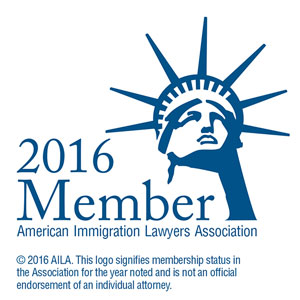How Cyrus’ View of Religious Toleration May Have Inspired the American Constitution
By Gary Endelman and Cyrus D. Mehta
The display of the Cyrus Cylinder in museums across America has sparked interest on whether Cyrus, who founded the Persian Empire in 549 BC, may have influenced the U.S. Constitution.1 Our essay explores the extent to which Cyrus may have influenced one of the Founding Fathers, Thomas Jefferson, who in turn inspired the Religion Clauses in the First Amendment, which provide: “Congress shall make no law respecting an establishment of religion, or prohibiting the free exercise thereof…”.
The Cyrus Cylinder describes how Cyrus freed people enslaved by the Babylonians, and allowed them to practice their religion and returned their various gods to their sanctuaries. A notable inscription from the Cyrus Cylinder reads, “I returned them unharmed to their cells, the sanctuaries that make them happy.” 2 The Cyrus Cylinder, often referred to as the first charter of human rights, demonstrates that Cyrus was a tolerant king who allowed people in his vast multinational empire to freely practice their various religions. The Old Testament also has references to Cyrus permitting the Jews to return from exile and to rebuild their temple in Jerusalem. Indeed, the father of Israeli independence, David Ben Gurion, openly cited Cyrus as a hero and President Harry S. Truman proudly compared himself to Cyrus when, in 1948, the United States became the first nation to recognize the new state of Israel. Much as Cyrus ended the Babylonian captivity, enabling the Jews to return to their biblical homeland and rebuild their ancient temple, Truman made possible the re-establishment of an independent Jewish state after almost 2000 years.
Although the Cyrus Cylinder was discovered long after the death of the Founding Fathers of the U.S. Constitution in 1879, it is well known that Jefferson was influenced by Xenophon’s Cyropaedia, which dwells on Cyrus as an ideal ruler, although it is by no means a historical account. It is well known that Jefferson possessed two copies of Cyropaedia – one of which was a Greek and Latin version. All the Founders were familiar with Xenophon’s Anabasis and Isaiah in the Hebrew Scriptures. Jefferson mentions Xenophon as a master of rhetoric in his autobiography. Xenophon viewed Cyrus as a just and tolerant ruler, who ruled over his subjects with persuasion rather than through force. Cyrus did not force his religion, presumably a Zoroastrian, on the various subjects of his vast empire. 3
There are also several biblical references to Cyrus, most notably the words of Deutero-Isaiah, in which he presents Cyrus in a divine manner: “That says to Cyrus, He is my shepherd, and shall perform all my pleasure; even saying to Jerusalem, Thou shalt be built; and to the temple, Thy foundation shall be laid.” 4 Surely, these references to Cyrus would not have escaped Jefferson’s attention, given that he was a keen student of Xenophon’s Cyrus. Jefferson’s interest in and appreciation for Cyrus was an inheritance from the Scottish Enlightenment. Scottish intellectuals often cited Cyrus in their own efforts to arrive at the proper relationship of church and state. 5
Jefferson strongly believed that religion was a personal matter and should be free from government influence. In his Notes on the State of Virginia, Query XVII, Jefferson objected to laws that allowed children who could be taken from their parents if they had not been baptized by stating, “But it does me no injury for my neighbor to say that there are twenty gods, or no gods. It neither picks my pocket nor breaks my leg.” 6 It was in Jefferson’s letter to the Danbury Baptist Association in 1802, in response to why as President he had not proclaimed national days of fasting that he famously referred to the “wall of separation between church and state” which has served as the basis for interpreting the Establishment Clause. 7
The First Amendment in the U.S. Constitution expresses America’s commitment to religious pluralism through two provisions – one protecting the free exercise of religion (the Establishment Clause) and the other barring the establishment of the religion (the Free Exercise Clause). The interpretation of these two clauses has remained contentious, but their very existence has endowed freedom of worship with a secular legitimacy that it might otherwise have lacked, much as Cyrus did by treating diversity as a source of strength not weakness. While some believe that the government should strictly enforce separation by not supporting any form of religion in schools or other governmental institutions, including references to God on currency and pledeges, others contend that the Judeo-Christian values of the Founding Fathers provide a historical sanction for overt religiosity such as prayer in public school and references to God in the public sphere. 8
Notwithstanding the lack of unanimity in interpreting the Religion Clauses, America has been successful in integrating so many groups of immigrants since its founding as it is similar to Cyrus’ model, where the government does not support one dominant religion while at the same time is not against religion. Indeed, the American model relating to freedom of religion was later adopted in the Indian Constitution. Even though India is a religious country, where the majority belong to the Hindu religion, it is also a home to other major religions. The Indian Constitution in Article 25 grants to citizens of India of all religious persuasions freedom to profess, practice and propagate their faith in a way that does not disrupt public order and does not affect public health and morality adversely. It is thus no coincidence that Zoroastrians and Jews have been able to worship freely, and prosper, in India and America.
Whatever doubts Jefferson may have entertained on key Christian doctrines, such as the divinity of Jesus or the truth of his resurrection, he did not feel the need to impose such skepticism upon others, respecting their faith even as he doubted the value of adopting it. For Cyrus and Jefferson, tolerance was at the core of their approach towards governance. As effective rulers, they made it easy for those whose beliefs they did not share to accept, indeed to embrace, their political supremacy, whether it be the evangelical Baptists who loved Jefferson or the ancient Hebrews who honored Cyrus. Circumspect in their public manifestations of piety, Cyrus in his day and Jefferson in his knew the pragmatic dividend to be reaped from toleration. The Declaration of Independence speaks fleetingly of “Nature and Nature’s God” and the Constitution makes no mention of the Deity nor imposes any religious test for office. Cyrus and the Founding Fathers sought not to banish religion but to subordinate it as an organizing principle to what they regarded as a more meaningful immortality, imperial fame for Cyrus and the republican nobility of the American revolutionary experiment for Jefferson. That was the one, true and abiding glory they both sought.
As more countries in a globalized world attract immigrants who follow different religions, Cyrus’ model of religious toleration will go a long way in fostering peace and harmony. The fact that in America new immigrant groups can freely establish their places of worship, even after facing religious persecution elsewhere, is redolent of the inscription on the Cyrus Cylinder that “I returned them unharmed in their cells, in the sanctuaries that make them happy.” The lasting attraction of America was and remains the one central truth that here one could become all that they were capable of being regardless from where they came from. For that to live on, the American creed has always celebrated personal freedom and religious diversity. No one in the ancient world exemplified that more completely than Cyrus. That is the enduring meaning of what Cyrus first established more than 2,000 years ago by allowing people for the very first time to freely practice their own religion, and which inspired Xenophon’s Cyropaedia.
Cyrus was not a Jeffersonian reformer and the link between them is more diffuse than direct. In our desire to make Cyrus relevant, we must not forget that, like all rulers, he was a product of his own time. Yet, it remains true to note that his philosophy of toleration lived on far beyond what Cyrus ever could have imagined and its continuing influence upon those who launched the American experiment in freedom was both pervasive and undeniable. Thomas Jefferson was hardly a naïve reformer. Like the other Founding Fathers, he followed Cyrus not because he shrank from power but because he wished to exercise it more effectively, knowing that the ability to weave together a mosaic of culture and thought will in the end produce a more enduring fabric. This remains our most sacred inheritance.
Gary Endelman is the Senior Counsel at FosterQuan, Houston, TX. Mr. Endelman graduated with a B.A. in History from the University of Virginia, a Ph.D. in United States History from the University of Delaware, and a J.D. from the University of Houston. From 1985 to 1995, he was with one of the largest immigration firms in the country. From 1995 to 2011, he was the in-house immigration counsel for BP America Inc. He is a frequent national speaker and writer on immigration related topics. In July 2005, Mr. Endelman testified before the United States Senate Judiciary Committee on comprehensive immigration reform. The views expressed by Mr. Endelman in this article are his personally and not those of FosterQuan
Cyrus D. Mehta, a graduate of Cambridge University and Columbia Law School, is the Managing Member of Cyrus D. Mehta & Associates, PLLC in New York City. He is the current Chair of the American Immigration Lawyers Association’s Ethics Committee and former Chair of AILA’s Pro Bono Committee. He is a frequent speaker and writer on various immigration-related issues, and is also an adjunct associate professor of Law at Brooklyn Law School. Mr. Mehta received the AILA 2011 Michael Maggio Memorial Award for his outstanding efforts in providing pro bono representation in the immigration field. Mr. Mehta was named Best Lawyers’ 2013 New York City Immigration Law “Lawyer of the Year”. The views expressed by Mr. Mehta in this article are his personally and do not not those of any of the organizations he is a part of.
1. See e.g. Cyrus Cylinder: How a Persian monarch inspired Jefferson, BBC News, http://www.bbc.co.uk/news/world-us-canada-21747567 ↩
2. The British Museum Translation of the Text on the Cyrus Cylinder, http://www.britishmuseum.org/explore/highlights/articles/c/cyrus_cylinder_-_translation.aspx ↩
3. In Mary Boyce, Zoroastrians – Their Religious Beliefs, the author at p.51 suggests that Cyrus was a Zarathushti as there was evidence of fire holders and that one of his daughters was referred by the Greek writers as “Atossa,” which in Persian is “Hutaosa,” who was the queen of King Vishtaspa, Zarathustra’s first royal patron. Clearly, Cyrus’s successors such as Darius and later were more explicit that they were Zarathushtis and invoked Zarathustra’s God, Ahura Mazda. ↩
4. For a commentary on the biblical references to Cyrus, See Joseph Wiesehöfer, Ancient Persia, I.B. Taurus; Pierre Briant, From Cyrus to Alexander – A History of the Persian Empire, Eisenbrauns; Mary Boyce, supra. ↩
5. Ancient Persia Influenced Thomas Jefferson, US Democracy, IIP Digital, US Department of State, http://iipdigital.usembassy.gov/st/english/article/2013/03/20130312143982.html#ixzz2RsF6GhFX ↩
6. Notes on the State of Virginia, Query XVII, http://etext.virginia.edu/toc/modeng/public/JefVirg.html ↩
7. Jefferson’s Wall of Separation Letter, personal correspondence with Danbury Baptist Association in 1802, http://www.constitution.org/tj/sep_church_state.htm ↩
8. The Supreme Court decision in McCreary County v. ACLU 545 U.S. 844 (2005), which narrowly held that the display of the Tenb Commandments at a county court violated the Establishment Clause, best exemplifies how difficult it is to inerpret the Religion Clauses in the First Amendment. ↩
The article originally appeared in the Summer 2013 of the Fezana Journal




